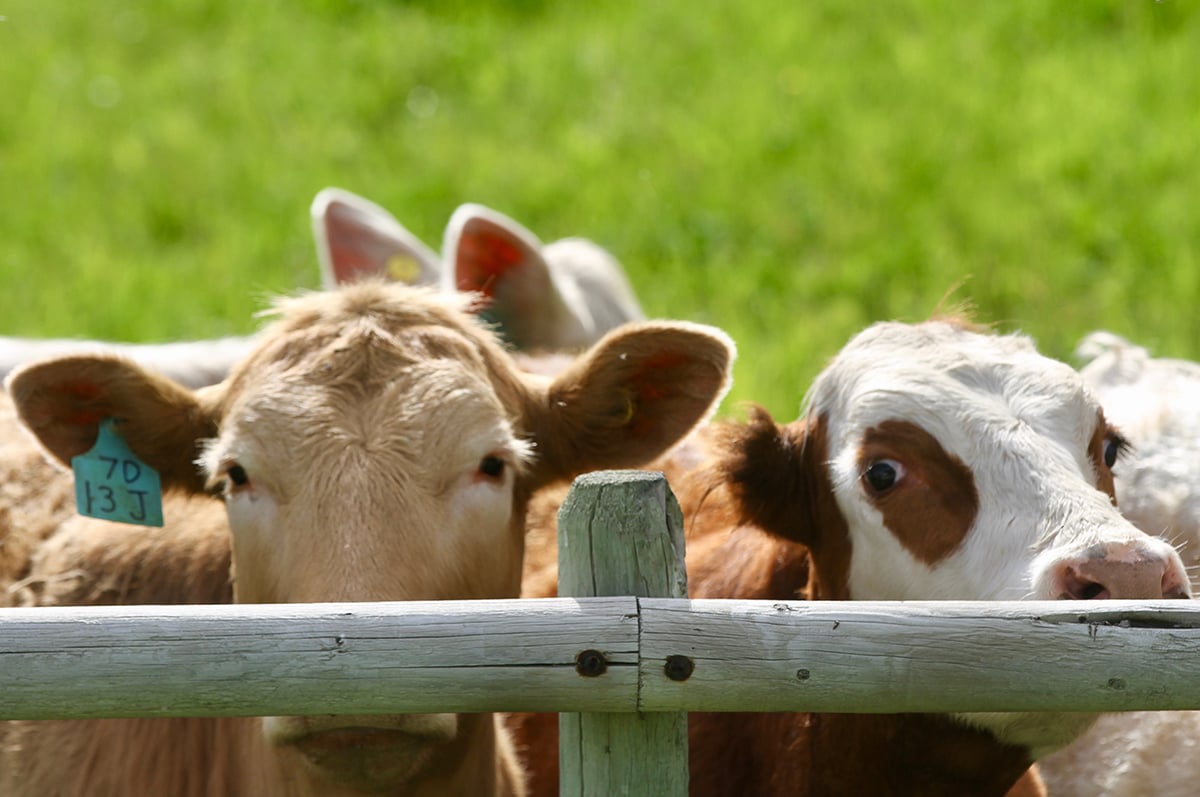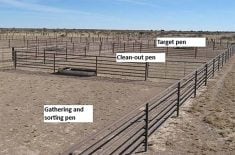RED DEER – The Canadian beef industry has reached a new level by importing record numbers of feeder cattle and exporting record amounts of beef.
“We are net importers of feeder cattle for the first time,” said Canfax market analyst Ann Dunford at the recent Alberta Cattle Feeders Association convention in Red Deer.
The inception of the two-year-old restricted feeder program moved Canada to this favorable position in 1999. It permits northern states to ship calves to the western provinces between Oct. 31 and March 31 without costly health tests.
Read Also

Feeder market consolidates at historic highs
For the week ending Sept. 6, Western Canadian feeder cattle markets were relatively unchanged compared to seven days earlier.
Alberta feedlot operators were quick to take advantage and brought in more than 100,000 head, mostly from Montana. Smaller numbers went into Saskatchewan and British Columbia.
For 1999, 196,000 feeders came to Canada under the restricted feeder program and under regular health regulations.
Between Oct. 31, 1999 and Feb.15, 2000, 150,000 head arrived as restricted feeders. The shipping season ends March 31.
On the export side, Canada sold a record $2.7 billion worth of beef last year. While a large share still goes to the United States, shipments to Asia and Mexico have substantially increased.
This movement has produced an upturn for Canada and the U.S., said U.S. Cattlefax analyst Duane Lenz.
Returning prosperity offsets the fact that beef cattle numbers are down substantially in both countries. Tough competition for a shrinking number of feeder calves is anticipated for the next several years, said Lenz.
Statistics Canada reported the national herd is down two percent to 12.7 million cows and calves as of January 2000. This should bottom out in 2001 or 2002 when rebuilding is expected to start.
The Canadian beef cow factory is down to 4.1 million head, a one percent drop from last year at this time. About 40 percent of those cows live in Alberta. The U.S. inventory is 42 million cows, including dairy.
Herd expansion rests on this year’s crop of heifers. With last fall’s soaring feeder calf prices, many went to feedlots, which stalled the herd rebuilding phase in both countries.
“We are not phasing a lot of these heifers back into the (breeding) herd,” said Lenz.
“If you keep some heifers back in 2000, and breed them in 2001 you probably won’t see any significant increase until 2003 or 2004.”
The combined 1999 U.S. heifer and steer slaughter topped out at 30 million head. This was more than expected but will fall for the next couple years because there are fewer cattle available. Lenz expects the kill to drop to 29 million this year.
Canadian heifer sales remained high in the last two years but Dunford predicts there will be an 11 percent reduction in heifer placements for 2000. The record year was 1998 when 1.48 million females were placed in feedlots.
The recent U.S. department of agriculture seven- state cattle on feed report showed surprisingly high placements.
Lenz suggested two reasons.
Prolonged drought in Texas and Oklahoma forced people to sell cattle. Also, to fill empty pens, feedlots started to buy lighter calves, borrowing from a supply that would normally go on feed later.
Improved demand for beef in 1999 bolstered the industry and reversed a 20-year trend of falling demand. The demand should hold but it is not expected to grow because there is not that much beef available in the coming years.
In 1998, there were 3.4 billion pounds of Canadian beef available but that dropped by one percent last year due to fewer animals processed.
Improved demand for beef and better live prices must be viewed cautiously. Producers must watch wild cards like the price of feed corn and
barley.
Calf prices are dictated by corn prices. Feedlots calculate how much they can afford to pay for cattle based on the value of grain. Fifty cents more for a bushel of corn lowers the price of feeder cattle by $4 per hundred- weight.
Barley, which is priced off corn, is figured the same way in Canadian feedlots.
If corn prices go up, calf prices won’t rise as high as producers hoped.
In addition to grain, Canadians must watch the currency.
Fed steer prices in Canada will average in the low $90s for 2000 but the final price will be determined by the value of the Canadian dollar. If it continues to strengthen, the price could fall to an average of $90.















